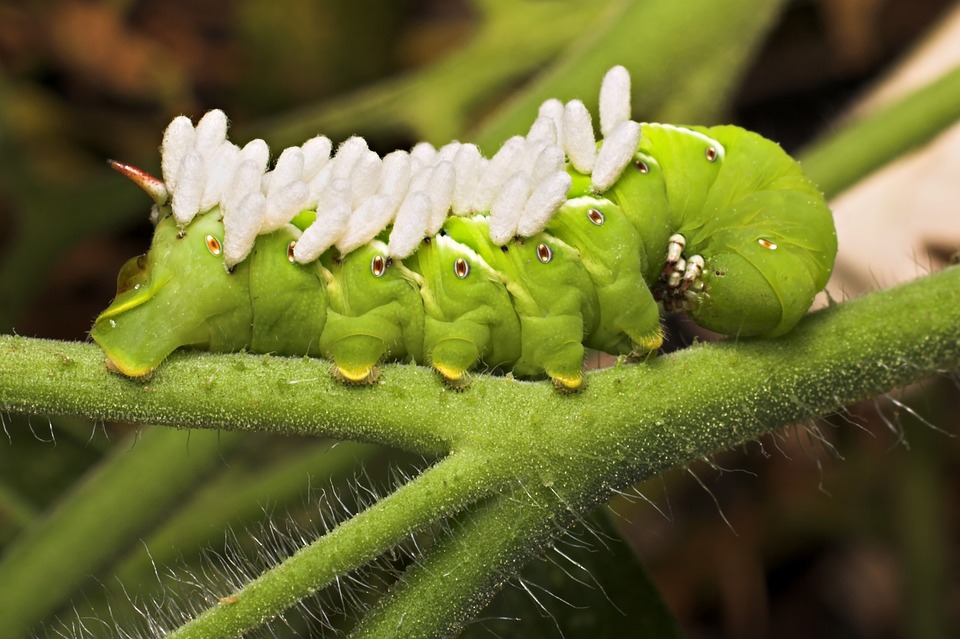Insect-pathogen interaction is the result of a continuous evolutionary race between the host, developing and optimizing strategies to reduce the pathogenic infection, and the pathogens, trying to overcome the insect defenses. The outcome of such interaction is not only depending on the host and pathogens, but their interaction with other elements of the ecosystems, involving three or more trophic levels.
Main mechanisms to defense against the infections developed by the insects rely on their immune system. This is comprised of both humoral and cellular components that are mobilized in response to pathogenic infections that are activated in response to the interaction with the pathogens. This response includes the activation of detoxification and damage repair systems the synthesis and secretion of antimicrobial peptides and degradation enzymes, phagocytosis, melanization, cell apoptosis and cell sloughing, among others. Most of these processes are modulated by the activation of three pathways involved in the immune response: the Toll, the immune deficiency (IMD), and the Janus Kinases (JAK)/Signal Transducers and Activators of Transcription (STAT) pathways.
With our studies we aim to determine and characterize the components involved in mentioned mechanism in Lepidoptera larvae as well as determine novel proteins and mechanisms that could also contribute to reduce the detrimental effects of the pathogens. We are mainly focused on the study of the interaction of Lepidoptera to two groups of entomopathogens, such as Bacillus thuringiensis and baculovirus, and their virulence factors. In addition, we also aim to understand how other members of the ecosystem can shape the insect-pathogen interaction.
By knowing these kinds of interactions we aim to improve or to develop novel strategies to increase the efficacy of natural pathogens for the control of agronomical important pests.
Our main projects in
this area are
SELECTED PUBLICATIONS
Jakubowska, A. K., R. Murillo, A. Carballo, T. Williams, J. W. M. van Lent, P. Caballero, and S. Herrero. 2016.Iflavirus increases its infectivity and physical stability in association with baculovirus. PeerJ 4: e1687.
https://doi.org/10.7717/peerj.1687t
Crava, C. M., A. K. Jakubowska, B. Escriche, S. Herrero, and Y. Bel. 2015.Dissimilar Regulation of Antimicrobial Proteins in the Midgut of Spodoptera exigua Larvae Challenged with Bacillus thuringiensis Toxins or Baculovirus. PLoS ONE 10: e0125991.
http://www.ncbi.nlm.nih.gov/pubmed/25993013
Gasmi, L., H. Boulain, J. Gauthier, A. Hua-Van, K. Musset, A. K. Jakubowska, J. M. Aury, A. N. Volkoff, E. Huguet, S. Herrero, and J. M. Drezen. 2015.Recurrent Domestication by Lepidoptera of Genes from Their Parasites Mediated by Bracoviruses. PLoS Genet 11: e1005470.
http://www.ncbi.nlm.nih.gov/pubmed/26379286
Bel, Y., A. K. Jakubowska, J. Costa, S. Herrero, and B. Escriche. 2013. Comprehensive Analysis of Gene Expression Profiles of the Beet Armyworm Spodoptera exigua Larvae Challenged with Bacillus thuringiensis Vip3Aa Toxin. PLoS ONE 8: e81927. PM:24312604
http://www.ncbi.nlm.nih.gov/pmc/articles/PMC3846680/pdf/pone.0081927.pdf
Jakubowska, A. K., H. Vogel, and S. Herrero. 2013. Increase in gut microbiota after immune suppression in baculovirus-infected larvae. PLoS.Pathog. 9: e1003379.
https://www.ncbi.nlm.nih.gov/pubmed/23717206
